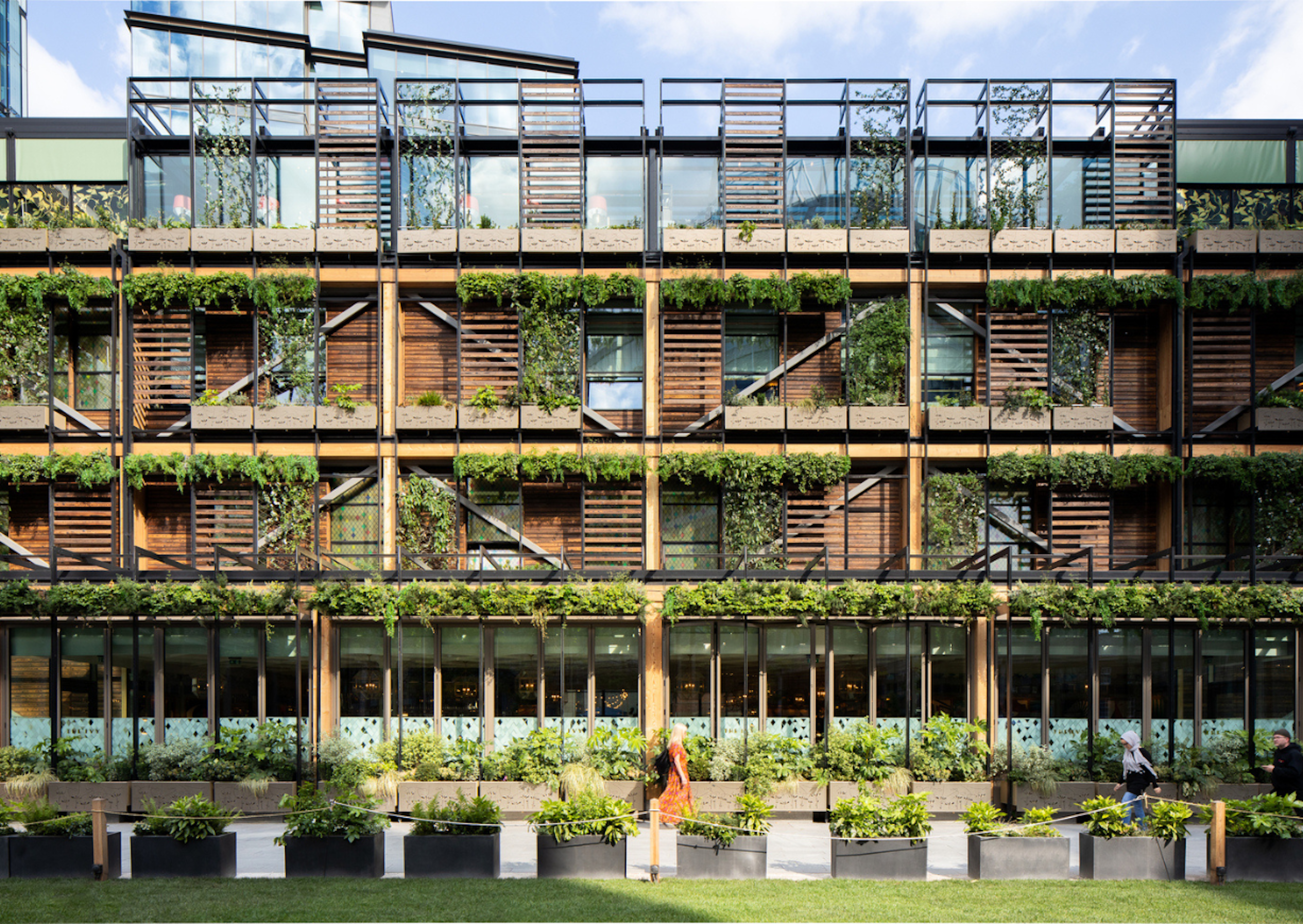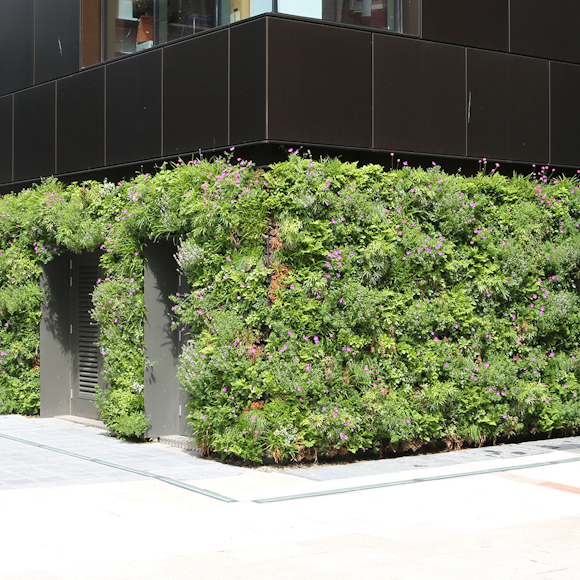Living walls, also referred to as green walls or vertical gardens, have gained significant popularity over recent years as a way to incorporate more greenery into urban landscapes. Whilst the first living wall structure can be traced back to 1938, today, living walls are often seen as a modern-day trend, with some raising questions around their environmental claims.
In this article, we uncover the true value of living walls through their environmental and commercial benefits, supported by research.
Environmental benefits of living walls
Since urban greening features have become more widely acknowledged, greening solutions such as living walls have gained recognition as an efficient way to bring more greenery into cities. But how exactly do living walls benefit the environment?
1. Living walls decrease air pollution
Air pollution is a combination of particulate matter and gases such as nitrogen dioxide (NO2), ozone (O3), sulphur dioxide (SO2) and carbon monoxide (CO), which contribute to seven million deaths annually.
Exhaust fumes from cars, bikes, and other vehicles are the biggest contributor to this air pollution in cities - especially where large buildings line either side of the street. This creates what is known as ‘street canyons’ which trap pollution at street level.
So, how can living walls help reduce such a lethal problem?
According to research into the Effectiveness of Green Infrastructure, introducing living walls can reduce the concentration of pollutants in street canyons by as much as 60% for particulate matter and 40% for NO2.

2. Living walls combat the urban heat island effect
Cities use a vast amount of concrete and tar to build roads and structures that naturally trap heat, causing urban areas to become hotter than rural areas. This is known as the urban heat island effect and can result in larger cities experiencing heat differences of up to 5°C.
To help combat this, living walls can be used on the exterior of buildings to imitate the colling effect that rural areas naturally benefit from. By absorbing the heat through living walls that are properly irrigated, research shows that temperatures can be reduced by up to 8.7°C.
3. Living walls reduce ambient temperatures
Did you know that plants absorb around 50% of the sunlight that reaches them, yet reflect only 30% of this back? Naturally, vegetation creates a cooler and more pleasant climate, especially during the hottest days of summer.
Commercial benefits of living walls
Living walls are not only visually appealing and environmentally friendly, but offer commercial benefits for businesses to take advantage of. Here are a few that make living walls an exceptional business case:
1. Living walls boost employee productivity
Incorporating plants in a workspace creates a greener and more inspiring environment for everyone. Living walls contribute to a positive mood, improving the efficiency of decision-making in complex tasks. In fact, research shows that a green workspace can boost productivity by 15%.

2. Living walls help reduce heating costs
Buildings experience heat loss through their walls and roof, which is why we require heating in the winter to remain warm. According to the London Living Roof and Walls Technical Report in 2008, the shade provided by exterior living walls can reduce temperature fluctuations at the wall surface.
On top of this, living walls create a still air zone adjacent to the wall, which can reduce convection at the surface by up to 75% and heating demand by up to 25%. This means that less heating is required during winter, saving thousands in electricity bills for businesses who take advantage.
3. Living walls help brands showcase their commitment to sustainability
Living walls provide a great way for businesses to showcase their brand’s commitment to sustainability. With something so visually striking, passers-by, customers, and employees will notice the effort put into creating a positive impact, helping shape their perception of the brand.
Living wall systems from the experts – Viritopia
Here at Viritopia, we provide all types of buildings with exterior and interior living wall systems that have been carefully designed, installed, and maintained over the past 15 years. Whether you’re looking to improve the air quality of your space, or like the idea of bringing nature into your workspace, contact our team today – we’re always happy to talk and would love to discuss your requirements.


